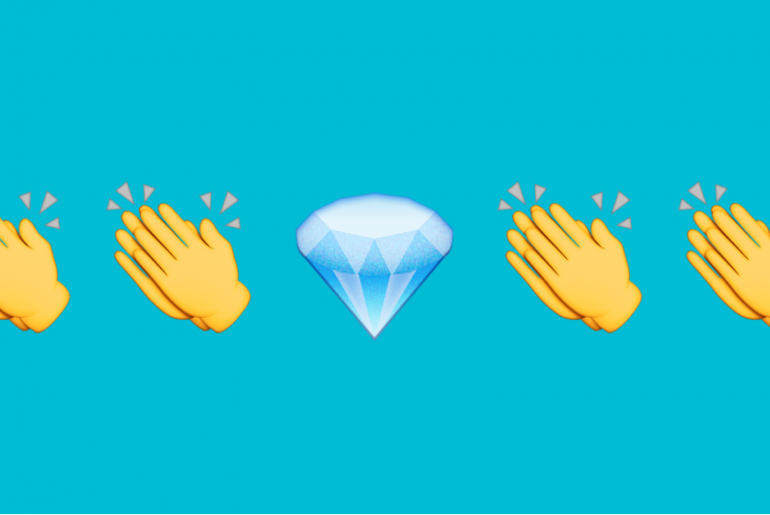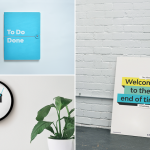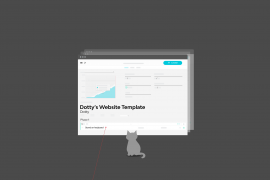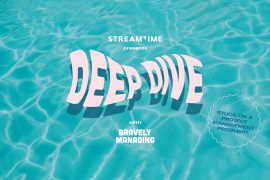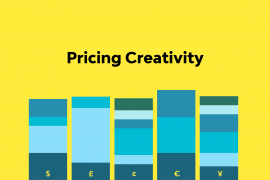A hell of a lot of work has gone on behind the scenes to create Streamtime. Guest blogger Melissa Baillache, shares one of the secret weapons behind the redesign.

Here at For The People, we’re apparently a hard bunch to please.
So much so that for the longest time it was hard to accept that an alternative design tool might fit into our already impressive list of suitors. But like many of the more interesting stories go, this isn’t a tale of love at first sight, but instead the story of how one project, (and probably our biggest to date) caused a team, and almost an entire agency, to truly fall in like with Sketch.
Before I go on, full disclosure; Sketch and I were very much already an item before this project began. Having been through those awkward first steps that come with getting to know any new product, it was obvious that suggesting the team trial it on such an important project wouldn’t be taken lightly. However, you would have had to have been living under a rock not to have heard the professions of love radiating from the design community. And lucky for me none of my colleagues were in fact fans of rocks, nor living beneath them, so I knew I had curiosity on my side. But I’m getting ahead of myself…

First comes product… The beginning
In late October 2015 the folk over at Streamtime were looking for someone to help them with a challenge. They wanted a do-over. With over 8,000 users, their product was considered by many to be successful, but they were smart enough to know that in order for it to continue to thrive, radical change was needed. Enter, For The People.
Streamtime at its core was project management software. Did it work? Sure. Was it any different to anything else out there? A little maybe, but not in a way that was truly meaningful to its users. So that’s where we started – delving into the minds of the existing and potential future Streamtime audience; who they were, how they felt, what they wanted, and thought they needed. We dove deep into researching different models for tracking time, curating dashboards, and planning jobs and before long we’d uncovered a core insight: Project management, well it’s all a matter of time right?
To give you some context, I’ll let Mat (a far better writer than myself) explain:
“It’s just what we agency people do. We track time. We fuss over Gantt charts. We fret over worked hours versus quoted hours.
But we hate it.
Because it’s cumbersome, time-consuming and – let’s face it – a little soul crushing… What if Streamtime threw the accepted practices out the window, and risked the ire of the tech media to radically alter the interface and input requirements?”
We knew we needed to reimagine how users entered their time without aggravating those tracking it and zeroed in on one of the most persistent pain-points – People hate doing timesheets. To put it plainly, timesheets suck.
We drew up ideas. Researched, paper-prototyped solutions, researched, and drew up some more until it clicked: To-do lists. Almost everyone uses them in one form or another, and have been doing so for 100s of years – it’s natural human behaviour right? We were confident using a to-do list intuitively might just help kick the timesheets lingering in Streamtime’s software to the curb for good. And so with that revelation, the time had come to jump onto our computers and start hashing it out.

Comfortably, uncomfortable
It’s awkward enough being set-up by a well meaning (albeit usually unwelcome) friend, so understandably if you’re set up by ‘the internet,’ trust isn’t exactly the first thing that comes to mind, especially when you’ve spent the majority of your career putting complete faith in another product. This one felt ‘robust’, and the other a little too open and potentially unreliable. Which is exactly why when we jumped into wireframing ideas, the team wanted to stick to what they knew, and for a while at least, it worked. But as our focus narrowed, it naturally meant that our solutions also became more fleshed out – and with that came constant iterations and a whole lot of pain.
The team had preferences for different tools, and simple changes like moving a button, or changing a text style was more Groundhog Day than intuitive. As more of our time was being spent involuntarily hitting copy + paste over and over again, inefficiency was not so subtly forcing itself in the way of our progress.
Then, this happened:

Falling fast and getting hurt…
How were we going to get this right? Bill Murray certainly wasn’t going to help, but just maybe, Sketch could. It was time to take a chance on something new. After a quick huddle and introductory session by someone whom was perhaps a little more excited than necessarily qualified to do so*, we set about designing with our new tool.

To some it felt so simple that it was almost clumsy, but the value that came apparent very quickly to all of us was that because Sketch was so focused it was also very easy to learn. In a matter of days we were busting out sexily consistent wireframes between multiple team members, with no signs of stopping any time soon.
We created overarching symbols and text styles that could be edited once and updated everywhere (so long inefficiency, I hated you the whole time anyway!), and working in a much sought after crispy, crispy vector landscape that had the ability to be ready for the web in seconds.
We were enamoured.

So of course, it was at this point exactly when our whirlwind romance hit a bump in the road.

It was on this Dark Wednesday, that one software update led to the disappearance of Jo‘s (our project’s lead) file. She was shattered, we were heart-broken, and desperate for answers. The explanation we soon found was that Sketch truthfully, is a constant work in progress. It’s open source, it’s always updating, fixing and improving, and because of that, it means not often, but sometimes shit bugs happen. Was this something we could get past? Jo had lost hours of work, but having had such a good experience to begin with, she was ultimately able to see a silver lining—because this happened at the very start of her relationship with Sketch and she wasn’t working as fast as she would today—she actually didn’t lose too much work.

Sketch it seemed was worth forgiving, after all we had a sneaking suspicion it really always had our best interests at heart. We hadn’t lost out too much, but we’d definitely be ditching our rose tinted glasses the next time around.
…And getting back up again
With our shoulders dusted, and a newfound appreciation for auto-save, we soon hit our stride again. Simultaneously bringing the new brand to life with our designs, integrating Invision into our workflow, and getting the product very much ready to ship. We’d gone from 1 designer to 4 out of the 5 in our office using Sketch (not to mention the development team over at Streamtime jumping on board too) and we were feeling pretty damn good.
Around this time, the marketing side of the equation went into full swing, and the first cab off the rank was a website that could launch concurrently with the product. We knew it made the most sense to keep using Sketch but with this part being built almost entirely by For The People, we definitely wanted to make sure our wider team would be happy to jump on the love train.
And so, like the great Ross Geller before me, I (internalised) a bit of a pros and cons list.
The Pros
– It’s light – Sketch takes way less space on my computer.
– It’s collaborative (Jo and I could share our files keeping styles and symbols nice and consistent).
– I could export assets for the developers so efficiently at whatever size and whatever file type they needed.
– I could play and iterate quicker using multiple artboards in the one document.
– There’s a ton of great third party support like Sketch Toolbox and Invision, plus a goldmine of plugins like the Content Generator and AnimateMate to name a few.
– I could use the inbuilt guides and grids meaning I wouldn’t need to create my own.
– It’s actually super affordable meaning we could actually afford to get the whole team on board
– And oh my, that Ctrl + C Colour picker. DAYYMNNN.

The Cons
– It can still be a little buggy from time to time; (clicking on the same bit of text and mysteriously not being able to edit it, hitting CMD + Z to undo and not seeing anything actually…undo, and you know, that whole ‘Dark Wednesday’ thing…).
– Some of the plugins don’t actually seem to work all that well (but that’s not really Sketch’s fault).
– You can’t link files and images to your Sketch document yet, meaning it could still eventually become a very big file and not exactly Slack-share-friendly (which we do a lot).
– And, just to nitpick, it doesn’t play well with After Effects (Which I suppose you might say is not surprising, but still could be an issue for us).
So great, we had a list! But unfortunately also like Ross, this was a list very much built around my needs and not the needs of Rachel the wider team. It was going to have to come down to a conversation.

We need to (or don’t need to?) talk.
As it turned out, the talk I thought we’d need to have wasn’t what we needed at all. The developers, Brady and (closet fan) Eugene were happy to trust that we were making the right decision for the project, and willing to accept Sketch into the fold. Amanda our product strategist was already secretly rendezvousing with Sketch to work through user flows and wireframes, and Andy, one of the founders of For The People had apparently been a Sketch fan long before I joined them in the first place.

We were off and running. The Streamtime website would require a unique approach to the usual deliverable – we would need to create two entry points, where one would leverage a real sense of user discovery using character control and side-scrolling as key. With time crunching, the whole team had to be very hands on, Amanda was helping to wireframe, Mat writing content, Jo, Liv, Ben and I were sharing files and collaborating on design, and Brady and Eugene were working through them, exporting what assets they needed, when they needed it like absolute bosses.
Even Andy jumped in the game towards the end, helping us with copy (and possibly also making a few secret design ‘improvements’).

By mid-May, we had managed to work alongside Streamtime to help redefine their brand, and design their product. We designed their marketing website, eDMs, wrote an ebook, and even created a game no less! Today, in the true spirit of digital our relationship with Streamtime continues, we’re still testing, improving and redesigning where it matters most.


And Sketch, well it was there the whole time, waiting in the wings for us with every iteration, every update, and every new image creation. It was there whenever we needed, and man, we were grateful.
We’re totally a thing now

So in the end you might be wondering, how can you heap all this praise, and show so much ‘love’ only then to say you only fell in ‘like’?” Well guys, relationships are hard! In reality, no product is perfect (however much we want it to be) so it’s irresponsible to go in blindly… and although I hate to say it, new ones might even catch our wandering eye. So if you’re asking if we’ll stay together forever, that’s a tough one to answer. But what I can tell you is that for right now at least, Sketch has filled a hole in our toolbox most of us never thought could be filled, and this is keeping the team over at For The People very, very happy.
**Swoon**

Melissa Baillache, is a Designer at For the People, and part of the team behind the Streamtime redesign.
Streamtime is project management software made for humans, not robots. You can plan jobs, track progress, and spot opportunities – all with the system doing most of your team’s time tracking for them.


